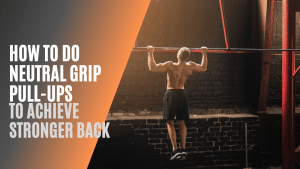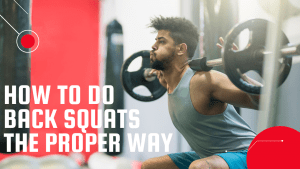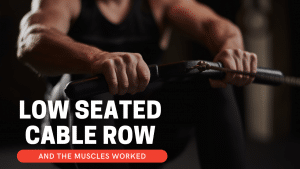What is a deadlift and the benefits of this exercise
Dead and lifts—these are two words that do not exactly convince you to exercise. But alas, there is an actual exercise with literally these two words in its name. The deadlift, as intimidating as it sounds, is one of the most comprehensive exercises out there as it puts to work various major muscle groups of the body in one powerful move.
You would think that since the deadlift is a highly compound exercise, many people would be drawn to it. But in reality, it is quite the opposite. Aside from it being stereotyped as an exercise strictly for powerlifters, the deadlift is also something that many people think is too advanced and too risky.
While these concerns are valid, doing the deadlift is actually not that difficult and can be safe as long as you maintain proper form and movement throughout the exercise. Moreover, mastery of the deadlift also brings a multitude of benefits that other exercises fail to do.
So if you want to get to know the deadlift more, keep scrolling and discover why this exercise is called the king of lifts.
What is a deadlift?
The deadlift is a highly compound exercise that requires you to lift a weight from the ground up to thigh level by drawing most of the power to perform the movement from the legs, thighs, hips, and lower back with the help of the core, shoulders, and upper back muscles.
This exercise is usually performed with a loaded barbell but it can also be performed with just a pair of dumbbells which makes the deadlift a more inclusive exercise than what most people believe.
The deadlift is not just for powerlifters anymore because it is just as beneficial in professional weightlifting as it is in weight training in general. After all, building muscle mass is not just reserved for powerlifters and bodybuilders; regular people who want to boost their metabolism, prevent muscle loss due to aging, or simply build overall strength are welcome to incorporate deadlifts into their workout routine.
How to perform a proper deadlift
- Begin by getting a barbell and loading it with enough weight that will enable you to perform the exercise with proper form and movement throughout every rep.
- Place your feet shoulder-width apart and make sure you keep them flat and firmly planted on the ground during the exercise. Your toes should be under the bar with your feet either pointing straight ahead or slightly angling out.
- Brace your core to stabilize your body for movement.
- Lower yourself in a squat by bending at the knees with your back in a neutral position and your shoulders retracted.
- Hold the bar with either an overhand or mixed grip and make sure that your hands are placed on the bar just slightly shoulder-width apart.
- Lift the bar by pushing upward while drawing strength from your legs. Make sure you are breathing out as you do this.
- Refrain from lifting your hips as you take the bar off the ground because your torso will lean forward which can result in an arched back.
- Avoid bending your elbows as you lift the bar because the arms should remain fully extended under tension while your hands maintain a firm grip on the bar as you come up.
- As you lift the bar to thigh level, your shins should be slightly grazed by it. Moreover, your shoulders should remain retracted and your back still straight as you come up.
- Lower the bar back to the ground in a controlled manner while keeping your back straight and your arms extended.
- Repeat according to your desired number of sets and reps.
The muscles at work during a deadlift
The primary movers during a deadlift are the gluteal muscles and hamstrings which are both responsible for hip extension, and the latissimus dorsi which plays an important role in enabling you to lift more weight during the exercise when properly activated.
On the other hand, the stabilizer muscles engaged during a deadlift are the obliques, rectus abdominis, spinal erectors, quadriceps, trapezius, rhomboids, and forearms. Together, these muscles assist with the proper execution of the movement as they ensure the stability of the joints and increased activation of the primary movers throughout the full range of motion.
Benefits of the deadlift
Stronger glutes
Nothing hits the gluteus maximus as hard as the deadlift. Being the biggest muscle in the body, the glutes have plenty of functions that are vital in most day-to-day activities, which is why it is important to make them stronger. With stronger glutes come improved endurance, increased power, and better pain prevention.
Moreover, dormant butt syndrome—which is what you get when you have tight hip flexors and weak gluteal muscles—is a serious problem that causes hamstring injuries, knee injuries, back pain, and hip pain in many people. Deadlifts can significantly reduce the risk of all these.
Killer lats and traps
Speaking of pains, back pain is a leading cause of disability in many people which is why strengthening the posterior chain is one sure way of lessening or even eradicating that risk. With deadlifts, you are not just going to develop massive lats and traps that are going to make you look like a badass but also back, shoulders, and neck that are less prone to injury.
Solid core
Whoever said crunches are the best way to get abs and strong core obviously did not know how to deadlift. To be able to lift heavy weights with a neutral spine, a strong and stable core is vital for a successful rep.
And while deadlifts are not exactly going to sculpt your abs, they can do so much more than that by building stronger abdominal muscles in a way that other exercises cannot. Besides, when it comes to the core, it should not always be about a six-pack; a functional and strengthened abdominal area should come first before any aesthetic goal.
Powerful hamstrings
Many people tend to focus more on defining the muscles on the anterior chain because, well, that is what people notice first. But the posterior chain, especially the hamstrings, does not get much love and attention. However, what many people are unaware of is that powerful hamstrings enable you to run faster, jump higher, and do any lower body movement with more explosive power.
Enhanced grip strength
Sure, being muscular in all the right places is a good thing. Whether it is the biceps, chest, or quads, having a sculpted body will always be impressive to many people. You know what is not impressive? A weak grip.
This is one aspect of most exercises that many people miss or simply ignore, but it is just as equally important as strengthening everything else in the body because when you do not improve your grip strength, doing lifts, pull-ups, presses, swings, and basically every other exercise will be a constant struggle. And while deadlifts are not exactly a grip-centric exercise, it is one great way to enhance it.
Improved posture
Bad posture is a major result of a weak core, weak glutes, weak hamstrings, and weak lats—so basically, it is caused by the major muscle groups being underdeveloped. But with the deadlift, these muscle groups build their overall strength, giving them improved efficiency in doing their job of keeping your back straight, your shoulders retracted, and your chest out.
Types of deadlift grip
Proper grip is key to effectively perform almost any exercise, and in the case of deadlifts, there are three ways you can grip the bar for optimal results. However, there is no definite answer for which one is the best because that will be entirely dependent on you. So if you want to know which deadlift grip is the most suited for your needs, then read on.
Double overhand grip
This is the classic deadlift grip since this is the default grip most people employ in almost any lift. To put it simply, the double overhand grip requires both of your palms to be facing you as you hold the bar.
In other words, the double overhand grip is the most basic of grips and should be the one you start your deadlifts with.
Mixed grip
The mixed grip, also called the over-under grip, is a more secure grip that prevents the bar from slipping out of your hands when you lift. To do this grip, one hand should be holding the bar with the palm facing you while the other is facing away.
But while this grip is more secure, it can also cause issues to tight biceps tendons and rotational stress to the body which may lead to asymmetrical back development.
Hook grip
The hook grip is the one used by Olympic weightlifters because it provides more security during barbell spins. To do a hook grip, grab the bar the same you would in a double overhand grip but instead of keeping your thumb on the outside of your hand, you need to tuck it inside.
However, just because this grip is effective for professional powerlifters does not mean it is the most comfortable. So if you just started deadlifting and still have not developed your grip strength, you may want to consider using the other grips first before progressing to this one.



